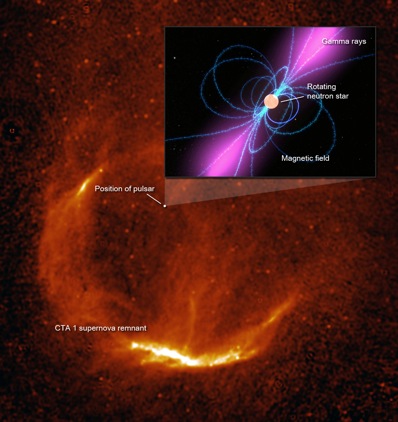|

Top Stories

|

|
 |
 |
 

The truth about variable black holes
...by studying the flickering light in the surroundings of two black holes, astronomers have discovered that magnetic fields play a crucial role in the way these galactic monsters consume matter...
read more

New population of faint gamma-ray bursts
...ESA’s Integral gamma ray observatory has detected several faint gamma-ray bursts, confirming the existence of an entirely new population of weak bursts...
read more

UK camera ready to eye the Moon
...a UK-built X-ray camera that will chart the mineral inventory of the Moon is set to launch into space on 22 October aboard the Chandrayaan-1 spacecraft, India’s first mission to the Moon...
read more |
 |
 |

|
Spaceflight Now +

|

|
 |
 |

Subscribe to Spaceflight Now Plus for access to our extensive video collections!
 How do I sign up? How do I sign up?
 Video archive Video archive

STS-120 day 2 highlights

Flight Day 2 of Discovery's mission focused on heat shield inspections. This movie shows the day's highlights.

 Play Play

STS-120 day 1 highlights

The highlights from shuttle Discovery's launch day are packaged into this movie.

 Play Play

STS-118: Highlights

The STS-118 crew, including Barbara Morgan, narrates its mission highlights film and answers questions in this post-flight presentation.

 Full presentation Full presentation
 Mission film Mission film

STS-120: Rollout to pad

Space shuttle Discovery rolls out of the Vehicle Assembly Building and travels to launch pad 39A for its STS-120 mission.

 Play Play

Dawn leaves Earth

NASA's Dawn space probe launches aboard a Delta 2-Heavy rocket from Cape Canaveral to explore two worlds in the asteroid belt.

 Full coverage Full coverage

Dawn: Launch preview

These briefings preview the launch and science objectives of NASA's Dawn asteroid orbiter.

 Launch | Science Launch | Science

 Become a subscriber Become a subscriber
 More video More video

|
 |
 |

|
|
 |

Fermi discovers first pure gamma ray pulsar
BY DR EMILY BALDWIN
ASTRONOMY NOW
Posted: October 17, 2008
The Fermi spacecraft’s Large Area Telescope (LAT), formerly known as GLAST, has discovered the first pure gamma ray-only stellar corpse, blinking at the Earth around three times a second, and providing new insight into how stars work.
A pulsar is a rapidly spinning neutron star, the crushed core left
behind when a massive star explodes. Although almost 1,800 pulsars have been catalogued to date, most emit their pulses at radio, visible, or X-ray wavelengths. The newly discovered pulsar, which lies within a supernova remnant known as CTA 1 about 4,600 light-years away in the constellation Cepheus, is the first example of a new class of gamma ray-only pulsars. Its lighthouse-like beam sweeps across the Earth every 316.86 milliseconds and emits 1,000 times the energy of the Sun.

NASA's Fermi Gamma-ray Space Telescope discovered the first pulsar that beams only in gamma rays. The pulsar (illustrated, inset) lies in the CTA 1 supernova remnant in Cepheus. Image: NASA/S. Pineault, DRAO.
Scientists suspect that CTA 1 is only the first of a large population of similar objects. "The LAT provides us with a unique probe of the galaxy's pulsar population, revealing objects we would not otherwise even know exist," says Fermi Gamma-ray Space Telescope Project Scientist Steve Ritz.
The pulsar in CTA 1 is located off-centre to the remnant's
expanding gaseous shell, a phenomenon that can impart a kick that sends the neutron star tumbling randomly through space. The Fermi observations imply that the CTA 1 neutron star is powering through space at a fairly normal speed of 1.5 million kilometres per hour, but it is slowing down.
A pulsar's beams arise because neutron stars possess intense magnetic fields and rotate rapidly. Charged particles stream outward from the star's magnetic poles at nearly the speed of light to create the gamma-ray beams picked up by observing telescopes. Because the beams are powered by the neutron star's rotation, they gradually slow the pulsar's spin. In the case of CTA 1, the rotation period is increasing by about one second every 87,000 years.
This measurement is also vital to understanding the dynamics of the pulsar's behavior and can be used to estimate the pulsar's age, in this case placing it at 10,000 years old. From the slowing period, researchers have determined that the pulsar is actually powering all the activity in the nebula where it resides.
"This observation shows the power of the LAT," says Stanford University's Peter Michelson, principal investigator for the LAT. "It is so sensitive that we can now discover new types of objects just by observing their gamma-ray emissions."
These results are reported in the 16 October edition of Science Express. |
 |
 |
 |
|
|



